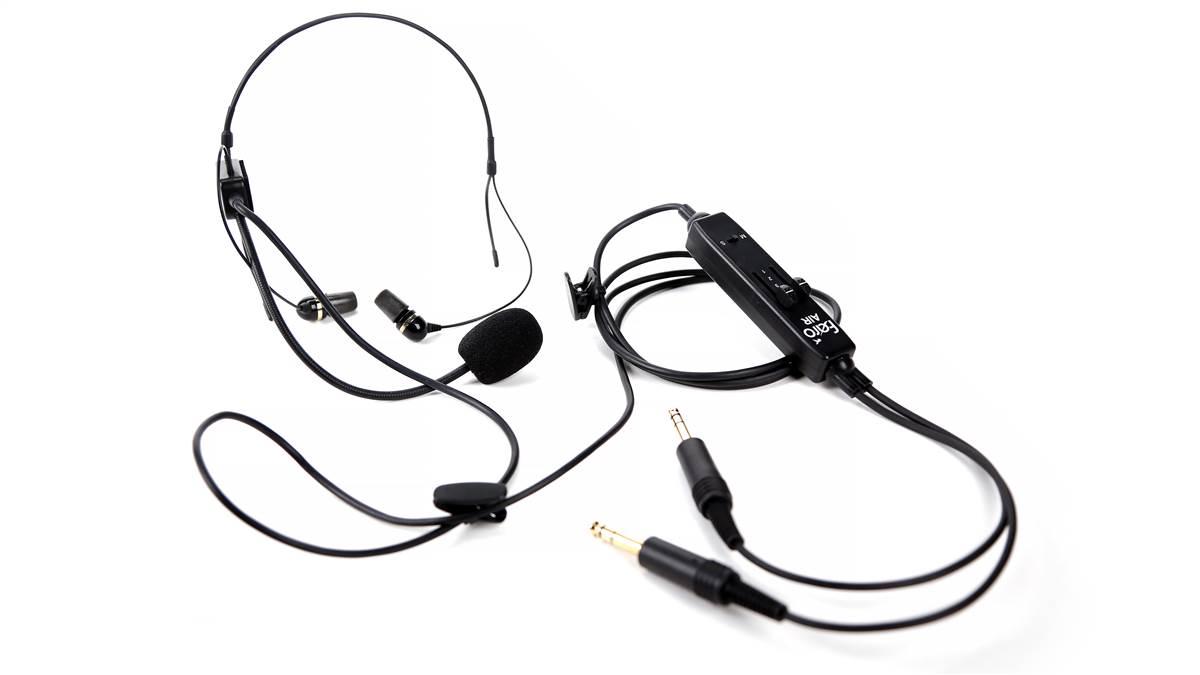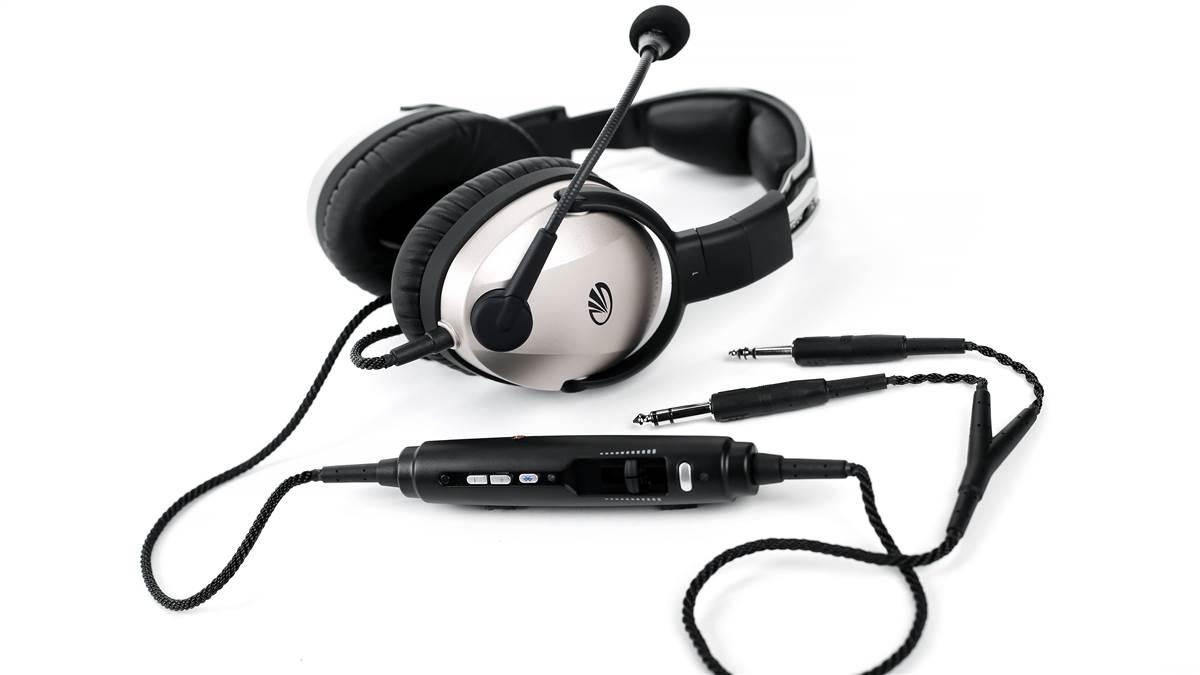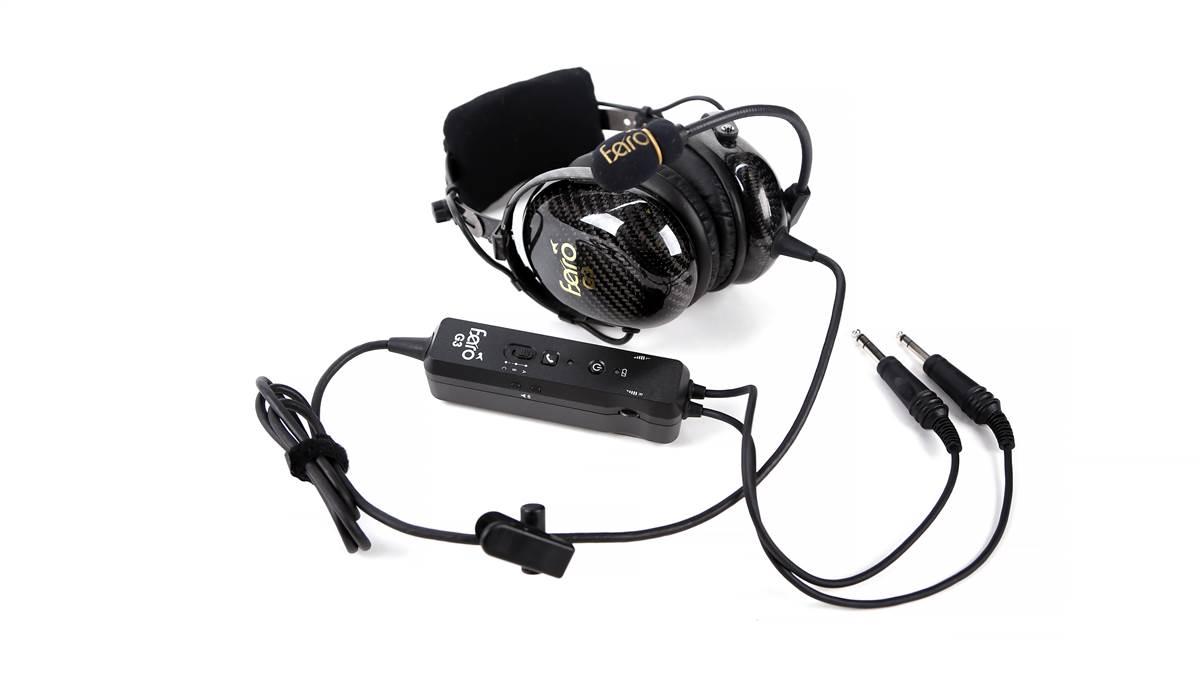Pilot Products: Dueling Headsets
Faro G3 ANR and AIR in-ear headsets
 AIR in-ear headset
AIR in-ear headset
The AIR in-ear headset won’t look unfamiliar to anyone who’s worn this type of hearing protection or, for that matter, anyone who’s used a telephone headset. The device is worn on the back of the head and is secured by loops over the ears. Wires are connected to earplugs that supply the hearing protection.
The AIR can be worn with or without a hat. As a longtime corrective-lens wearer, I didn’t find that the loops interfered with the stems of my glasses, or vice versa.
When using in-ear headsets, it’s important that the foam earplugs fit your ear canal snugly. Faro includes three sets of “standard” and three sets of “large” plugs color-coded green and blue. Try both sizes, and don’t assume (as I did) that the first size you try will work until you know for sure. A longtime user of in-ear headsets advises that you always carry extra ear plugs in your flight bag, because if you should lose one the set can’t be worn.
During a test flight, transmission through the microphone was clear. The noise reduction, said to be up to 50 decibels, was adequate. A nice feature is the unit’s music/auxiliary input, meaning you can listen to music on your device if you wish.
The most startling aspect of an in-ear headset is the weight: The AIR weighs just one ounce. It’s disconcerting the first time you fly with the AIR because you cannot believe that you are not wearing something clamped around your skull. But you get used to it quickly and on a long flight, you’ll notice the benefits.
The featherweight means the headset can be easily stowed and carried as well, although I would want a dedicated bag to ensure the unit maintains its shape. —Jill W. Tallman
Price: $389.99
Contact: www.faroaviation.com
 Lightspeed Zulu 3
Lightspeed Zulu 3
Lightspeed has brought some major innovations to aviation headsets in recent years, and they can be placed in two categories: esoteric technology for audiophiles; or light, comfortable, and durable materials that increase comfort and reduce weight. The company’s new Zulu 3 focuses on the second.
The Zulu 3 is astonishingly comfortable and quiet, and its frame is dimensionally identical to its popular Zulu 2 predecessor. But the new version adds rugged Kevlar cords that look strong enough to lasso a steer. And the plastic cover on the small battery box (two double-As) is lighter and stronger than its predecessor. Those two little batteries power the active noise reduction system for up to 60 hours of flight time, and using the built-in Bluetooth reduces that amount by about one-third.
Lightspeed is so convinced that the Zulu 3 will withstand pilot punishment that it’s offering a remarkable seven-year warranty, a two-year increase over its other models.
Microphone transmissions are crystal clear, and the gain can be adjusted to avoid squeaks and squeals. Bluetooth pairing is standard. The Zulu 3 is available with two-prong general aviation jacks, a helicopter connection, or panel-powered LEMO attachments.
I’m among the seemingly shrinking minority of pilots who don’t always use Bluetooth in airplanes—and my teenage son reminded me of this after a recent cross-country flight. While putting the Zulu 3 in its carrying case, he noticed the Bluetooth button and took me to task.
“You mean I could have been listening to music this entire time and you didn’t tell me?” he said with incredulity. Yes, son. What could I have been thinking?—Dave Hirschman
Price: $850
Contact: www.lightspeedaviation.com
 G3 ANR carbon-fiber headset
G3 ANR carbon-fiber headset
I’ve never cared much for active noise-reduction (ANR) headsets. I find that many produce an odd acoustic artifact that I can only describe as a “negative buzz.” To me, that’s at least as annoying as the ambient noise itself, not nearly enough better than an old-fashioned passive headset to justify paying double or triple the price. Plus, I just don’t need any more gadgets that constantly gobble up batteries.
So I was surprised to find that this new lightweight Faro model worked very well. That strange not-quite-noise wasn’t perceptible. Acoustic quality was good (although I didn’t try listening to music) and the additional noise reduction provided by the ANR circuitry was quite noticeable in both a Piper Arrow and a Robinson R22. (Although flying the helicopter in a sideslip with the doors off, there was a very specific angle at which that benefit evaporated.) The microphone was appropriately but not excessively sensitive, leading to fewer “Say agains” than I’m used to. Coming home on a cross-country, I went off frequency to switch from the Faro back to my beloved David Clark, and I admit it sounded unnaturally loud for at least the first five minutes.
Faro touts the light weight of its carbon-fiber frame and ear cups, citing a gross weight of just nine ounces. The unit performed well enough to convince me that at a list price of $689.99, it’s worth a look if you’re in the ANR market. —David Jack Kenny
Price: $689.99
Contact: www.faroaviation.com
